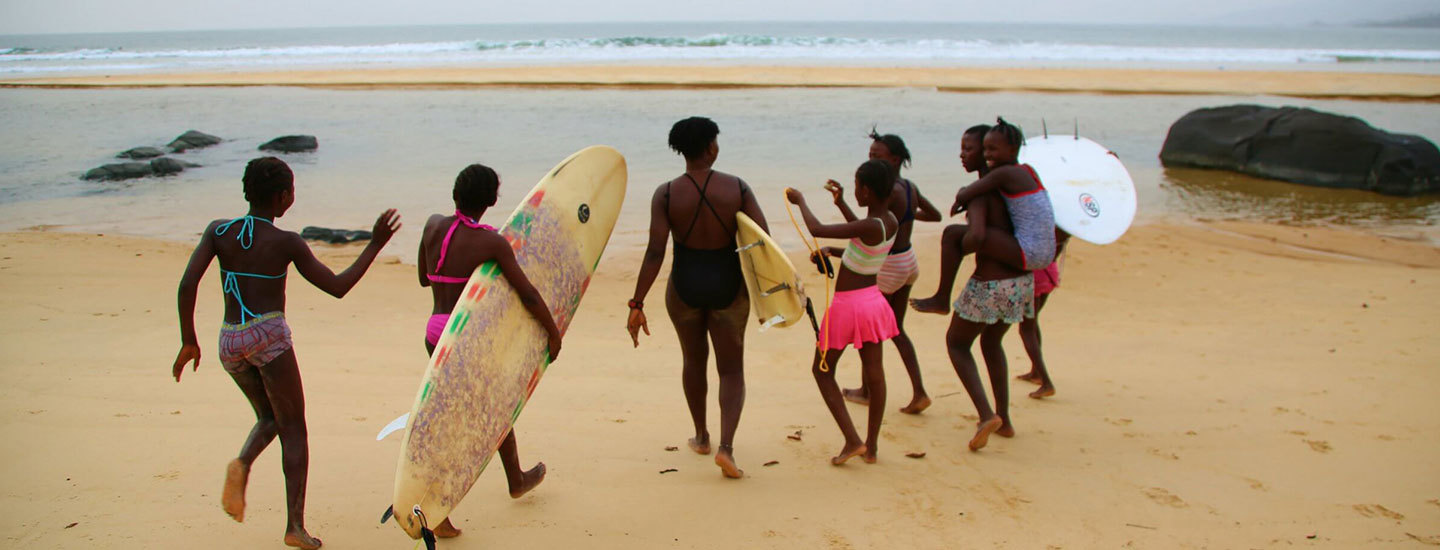
Written by Cassidy Farach, Surfrider Summer Legal Intern
With summer coming around and COVID-19 travel restrictions loosening all around the country, Americans are eager to return to the great outdoors after a year-long quarantine. Of course, nothing says freedom and summer fun like a trip to the beach. But the role that ocean access plays in our lives is more complicated than just fun in the sun, as beach access in the United States has a dark history and there is a discriminatory side to it that is often overlooked. As part of our belief that beach access is an established right shared by all the public, Surfrider seeks to educate people about the systematic discrimination that has prevented and continues to prevent many Black, indigenous, and people of color (BIPOC) communities from accessing a public resource.
Discrimination and Redlining in Beach Access
Beach and water access has been historically kept from BIPOC communities, in some instances, through segregation and reinforced through threats of legal punishment or violence. An infamous example of this occurred on the Chicago shores of Lake Michigan in 1919, when white youth gang members stoned a Black teenager named Eugene Williams to death after he had accidentally drifted across a segregation line in the water. This sparked a race riot that lasted seven days and claimed almost forty lives.
A less visible way that systematic discrimination has been perpetuated in U.S. communities comes from the process of redlining. Redlining is a term that describes the systematic denial of various services to residents of specific neighborhoods or communities and is an example of historic discrimination in urban planning that is still felt by many BIPOC communities to this day. Through either a selective raising of prices or discriminatory laws that maintained segregation even after segregation was formally abolished in the 1960s, redlining was used to create unjust conditions against BIPOC communities. This means that, even after discrimination in the form of keeping people from using certain beaches or waterways due to the color of their skin was outlawed, the tools were in place to guarantee that segregation was essentially still in effect in many communities across America.
Redlining was often used to prevent beach access for BIPOC communities. Andrew W. Kahrl, an Associate Professor of History and African American Studies at the University of Virginia, explained that many places would create ways to limit beach access for BIPOC people by designating their public beaches for residents only, charging exorbitant access fees for non-residents, and/or barring non-residents from parking near the shore. All these systems were designed to keep minority populations in neighboring cities out. Kahrl also said that, even though Black communities would ask local legislators and city officials for more beach access opportunities, many still were not afforded the opportunity to recreate at the same beaches and pools frequented by middle-class white communities.
The effects of redlining are still felt today in areas that have had less historical development or infrastructure. For instance, many neighborhoods in historically redlined areas struggle with accessibility and movement. A simple trip to the beach requires safe, reliable, and affordable transportation. Lower-income communities often have disproportionate access to this kind of transportation than more affluent neighborhoods do. This is not the only disproportionate issue that lower-income communities face, as many also deal with higher levels of respiratory issues and heat-related illnesses. These issues are due to a number of reasons, such as less green landscaping and shading to lower local temperatures, as well as the aforementioned lack of transportation to hospitals and clinics. Furthermore, a lack of beach or water access means that the hottest neighborhoods are left without a way to cool down in the summer months. Higher temperatures have been correlated with plenty of negative effects, such as spikes in crime and lower test scores by schoolchildren. Without a way to cool down or escape the heat during the summer months, these issues affect lower-income communities at an unequal rate to their higher-income counterparts.
The Benefit of Beaches
Beach access can actually help with a lot of these issues, and not just as a way to cool off when temperatures soar. Beaches can serve as a center of a community, or a meeting place where people of all walks of life can share equal grounds. The United Nations Education, Scientific, and Cultural Organization (UNESCO) has stated that well-designed, well-maintained public spaces are critical to the health of any city. Public spaces like beaches create a unique opportunity for social mixing, civic participation, recreation, and a sense of community or belonging. Furthermore, by elevating beaches as community centers in this way, they aid in addressing some of the problems that redlining has left us. Rebuilding and restructuring historically redlined areas in an integrated way is vital to redressing spatial segregation, which helps provide the most disadvantaged urban areas with quality public spaces and amenities as well as promote diverse uses of the land. This method of redressing the past can encourage social mixing in housing selection with the aim of having people from different backgrounds and socio-economic conditions live in the same districts, with the same beaches.
Surfrider Foundation fights for equal access to the beach for all people. We want to use our knowledge and experience of the past to redress historical discrimination and overcome this obstacle together. It is important to know the history of discrimination to understand how we can correct past societal transgressions and move to a more equitable society and beach culture.
Sources:
https://www.kcrw.com/news/shows/greater-la/nature-race-lausd-santa-monica/education-nature-race
https://www.cbsnews.com/news/redlining-what-is-history-mike-bloomberg-comments/
